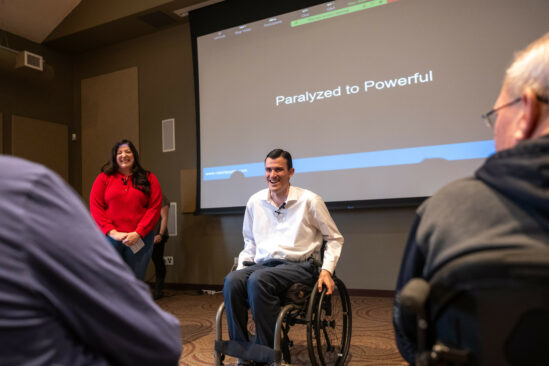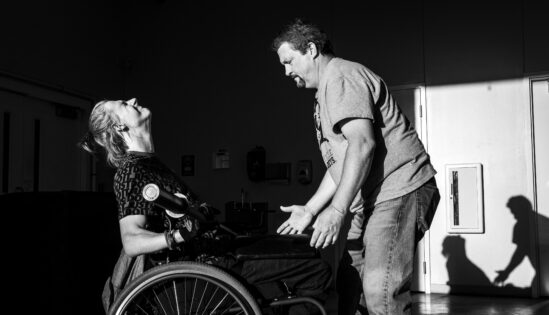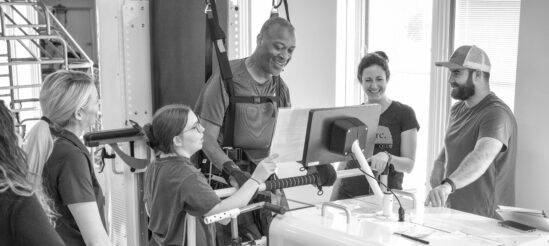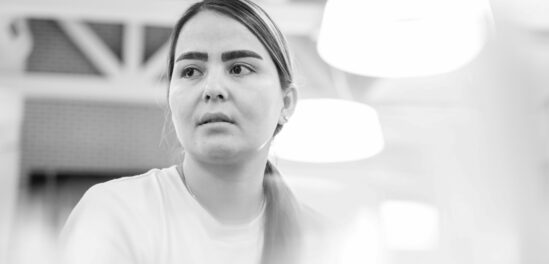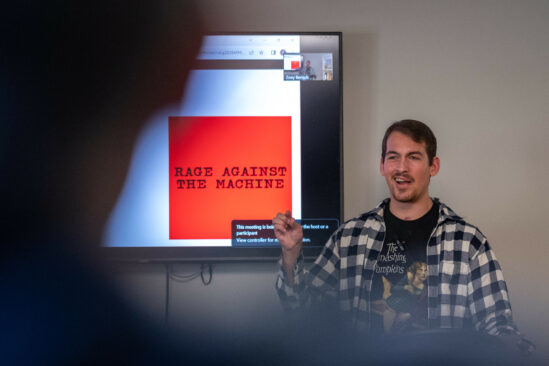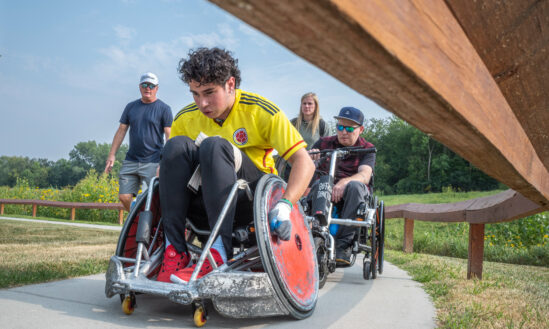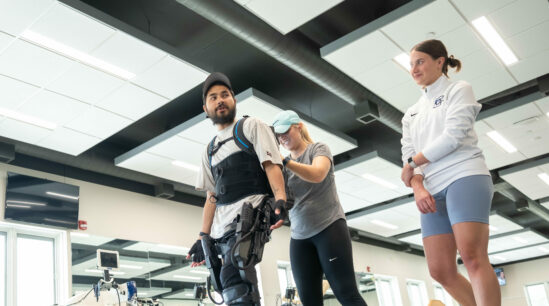It’s a mild mid-February afternoon. 4:00 PM, to be exact, a point in the day some might affectionately refer to as “quitting time.”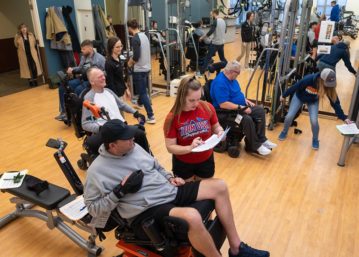
Those in question, the “quitting time” crowd, might be occupied with punching out for the day, daydreaming about the commute home and the relief of a weekend ahead.
Inside QLI’s Fitness Center, the story couldn’t be more different.
The gym is packed wall to wall with wheelchairs whose users have positioned themselves in front of an array of strength-training stations. They’re pulling cabled weights down to isolate the broad muscles of their back, or straining to stretch their arms away from resistance bands secured to their wrists.
These are just a handful of QLI’s current spinal cord injury rehabilitation participants. Here, no two stories are the same. The people in this room are still healing from the transformative damage of car accidents, falls, or degenerative conditions. Each faces a unique journey to redefine a way of life that feels some kind of normal.
And yet, they share intent here, a place where the weights clang like anvil strikes and progress is measured by desire just as it is by the number of reps.
Every Friday, while others punch out, this group punches in.
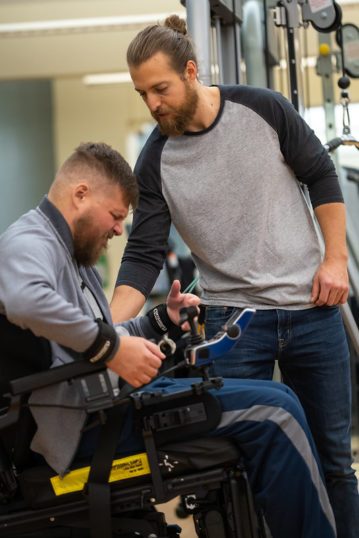 Weaving through the maze of wheelchairs, unbuckling elastic bands from carabiner clips and exchanging free weights for slightly heavier—or lighter—free weights, is Spencer Curtis, QLI’s fitness coach. For all intents and purposes, Spencer is the lynchpin of the workout group. It’s his responsibility to keep each individual’s needs top of mind, to measure and safely progress every one of the diverse strength-and-conditioning goals in the room. It’s his responsibility to serve as both personal trainer and personal coach.
Weaving through the maze of wheelchairs, unbuckling elastic bands from carabiner clips and exchanging free weights for slightly heavier—or lighter—free weights, is Spencer Curtis, QLI’s fitness coach. For all intents and purposes, Spencer is the lynchpin of the workout group. It’s his responsibility to keep each individual’s needs top of mind, to measure and safely progress every one of the diverse strength-and-conditioning goals in the room. It’s his responsibility to serve as both personal trainer and personal coach.
“These are men and women who go through a five-day therapy week, every week,” Spencer says. “Our physical therapists are training [clients’] extremity and core strength each and every day, sometimes multiple times a day. A Friday afternoon session is hard to be motivated for.”
Anyone who has tried to keep up a fitness plan knows the feeling firsthand. Friday is a day of empty treadmills and bored employees looking for machines to wipe down.
But at QLI, the 4:00 PM group makes its end-of-week workout a crucial routine. It is a mix of regulars and a rotating cast of new faces eager to hit the weights, not to mention the crew of students and interns playing supporting roles.
Part of the allure, Spencer says, is the sheer benefit.
“We’re pretty focused on working upper-body with this group. That’s what powers your ADLs (Activities of Daily Living), your transfers. This session is about building autonomy and structuring workouts to make sense for increasing each person’s physical function.”
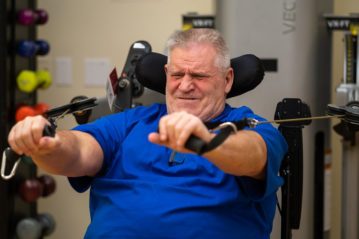 There’s more to it, though. Those who attend the session make it clear they want to be present, if for the physical benefit, then for the emotional camaraderie as well.
There’s more to it, though. Those who attend the session make it clear they want to be present, if for the physical benefit, then for the emotional camaraderie as well.
Music booms throughout the gym. It’s common for a debate about the best Beastie Boys song to break out, or for rehab clients to lob off-color jokes at one another between sets of dumbbell curls or pectoral flys.
These relationships matter. They form the glue, the connective tissue, the quiet, invisible secret that makes a late-Friday gym routine like this work. Superficial beginnings, like idle comedy and conversational vibes, quickly become the inspiration to keep people engaged.
“We work out because it connects us to what we value,” says Leslie, a spinal cord injury rehab client and a regular face at the Friday workout sessions. “We’re here to get back to life in what ways we can. If we can provide that extra motivation for one another, we’re all the better for it.”
Communal motivation translates into a culture of hard work. It keeps the weight heavy and the mood light, pushing people to strain, to exert extra exhausting effort.
And, ultimately, to achieve.
When one person struggles, the rest—fellow lifters, family members, volunteers, interns, and clinicians alike—are quick to weave a safety net of encouragement. Likewise, when one succeeds, it’s a shared victory. Despite the seeming isolation of catastrophic injury and the harrowing, individual effort recovery demands, every inch of progress is an inch forward together.
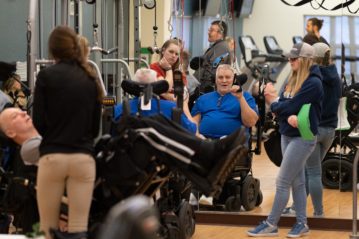 This isn’t the only time in a week the rehab clients will hit the weights. But it might very well be the most important.
This isn’t the only time in a week the rehab clients will hit the weights. But it might very well be the most important.
For Spencer, the gravity of his role is obvious:
“The outcomes of those in our group are more than physical,” he says. “But I’m lucky to see and measure how people are getting better. You know at your core if you’re making a difference. That sort of thing stays with you. Every person in this group is building the structure that will carry them to success. It’s not just me doing it for them, it’s the whole experience at QLI.”




